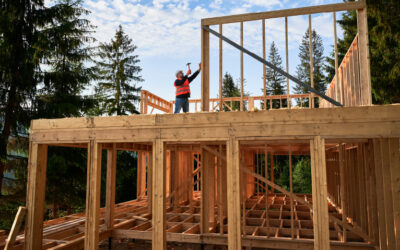If you did any summer commuting you likely encountered the delays, detours and reduced travel lanes of road construction. It’s no surprise that The Economist says 90 percent of global infrastructure projects are either late or over budget.
That said, the construction business is booming, although increased competition has meant timelines and budgets are even tighter, just as jobs are becoming more complex. Management consultants McKinsey and Company report that many companies just can’t keep up, with some large projects running 20 percent overtime and as much as 80 percent over budget.
“The industry is at a technological tipping point,” Smartsheet construction management app expert Stephanie Viers told Forbes. “We talk to hundreds of our customers in construction, and we hear the same story: it’s evolve or die. The competitive pressures are just too great to forego the advantages technology offers.”
Problem is, hours or even minutes wasted on a construction project can result in days or weeks of delays as one portion of the project is reliant on the successful completion of the previous one, and delays have a domino effect.
This is where adoption of digital platforms to create auto alert, collect digital sign-off approvals, and maintain project documents, helps to ensure that many of the delays caused by misinformation or lack of communication are a thing of the past.
Much of the delay encountered in any construction project stems from design mistakes and inaccurate project data. These errors are compounded when they’re translated to on-site construction and often require additional material and labour to correct.
This is confirmed by research in 2020 from the Navigant Construction Forum that found that more than nine percent of construction total project cost is rework. Consider that projects can be massive undertakings, with numerous workers involved, thick specification books and aspects of the job that can take months to finish.
So, how do you save time and thousands of dollars in cost overruns?
Experts point to the industry’s shift to a digital strategy using 3D planning, building information modeling and project management systems to cement success in today’s competitive market.
Building information modeling, or BIM, coalesces all elements of a project with fully interactive 3D models that detail geometry, aesthetics and even thermal and acoustic properties. This way, projects can be collaborative from start to finish. BIM keeps everyone on the same page during construction, even when the workflow changes.
More advanced BIM software will also track estimates in real-time so that project managers can troubleshoot and make smart choices that impact material or labour costs. And architects may decide to have certain pieces prefabricated in bulk using robotics, saving time during construction. On-site crews simply have to secure the pieces in place.
Concept 3D software, for example, creates immersive online experiences with multidimensional modeling, interactive maps and virtual tours. The 3D virtual model can help building engineers perfect design and see how the planned structure fits into the environment and surrounding buildings.
These solutions can help construction trades operate more efficiently with less waste and increased revenue.
However, the industry as a whole has been slow to adopt digital tools. McKinsey and Company reports that construction’s productivity has only grown by 1 percent over the past 20 years. The global average for productivity increases in all sectors over that same period is 2.8 percent. By comparison, manufacturing has increased productivity by 3.6 percent.
The answer to boosting productivity? Turning to new digital technologies that automate repetitive work and retraining workforces to address the skilled trades gap.
The recession in the late 2000s saw many skilled trade labourers out of work and many never returned to previous occupations. “The construction industry lost 1.5 million workers during the recession, and we’ve only brought back about 600,000. The median age of a construction worker right now is more than 40 years old,” Rob Dietz, chief economist with the National Association of Home Builders, told Forbes.
Next generation employees are not entering the construction trades as readily as previous generations. While graduate students are incurring large amounts of educational debt, many high-paying trade jobs are unfilled.
Millennials are digital natives, so the focus on emerging technologies will attract a younger tech-savvy workforce, and streamlining operations with new technology will mean less time fixing mistakes, so you’re able to maximize your existing labour force.
For example, project-management software platforms help automate mission-critical communications. Team members can be automatically notified about changes that may affect their trade and task. If a plumbing contractor finds that a back-ordered drain part will cause delays, a notification can be sent to all other trades to help reschedule labour and tasks so there’s less downtime.
Processes such as change orders and safety logs can also be maintained in a shared location – like cloud-based software – and reduce time spent chasing paperwork and supervisor approvals.
Procore is one software platform that connects all on-site crews and supervisors to everything they need instantaneously. This platform allows for hundreds of data points to be integrated and easily shared.
Another major cause of costs and scheduling delays arises from discrepancies between geological surveys and actual on-site conditions. This is where the integration of new technologies like high-definition photography, 3D laser scanning and drone aerial surveying provide more accurate survey information to reduce on-site surprises.
On that note, Bluebeam Revu allows project stakeholders to review designs and make real-world changes during construction, with transparency for the team.
And if you’re impressed by smartwatch functions, wearable technology is also part of construction sites – smart helmets and smart safety glasses with built-in video cameras or smart vests with GPS and bionic exoskeleton properties that enable super-strength. These Six Million Dollar Man-style vests increase productivity, reduce fatigue and result in fewer work-related injuries.
All that virtual reality that is tricking out video games is taking training for the construction industry to new heights. Lifelike VR experiences help workers hone skills like scaffold safety 25 stories up or operating a crane on a foggy morning – situations that are too difficult or expensive to prepare for in the real world.
These are important steps forward. According to a recent safety index report from Liberty Mutual, the most common injuries to construction workers include falls or over-exertion such as lifting too much.
Wearable technologies can identify employees who are not wearing proper safety gear or working in dangerous locations. They can also alert workers to potential tripping hazards like misplaced tools or equipment.
Even homeowners are adopting the use of these new technologies. Kukun Home Intelligence software, for example, allows homeowners to virtually plot the equity in their homes and to estimate the value of a proposed renovation in terms of the yield in increased equity delivered.
Homeowners can rationalize everything from repairing a popcorn ceiling to building a new garage. And get the kids that new surround-sound home theater and games room!
Bottom line here is that diminishing resources, both human and natural, growing infrastructure requirements, and industry demand are pushing the construction industry to adopt new technologies.
The outcomes are promising.
Digital transformation is the reboot needed for the industry to navigate workforce issues, innovate for new efficiencies, and build an integrated platform to promote growth for generations to come.













